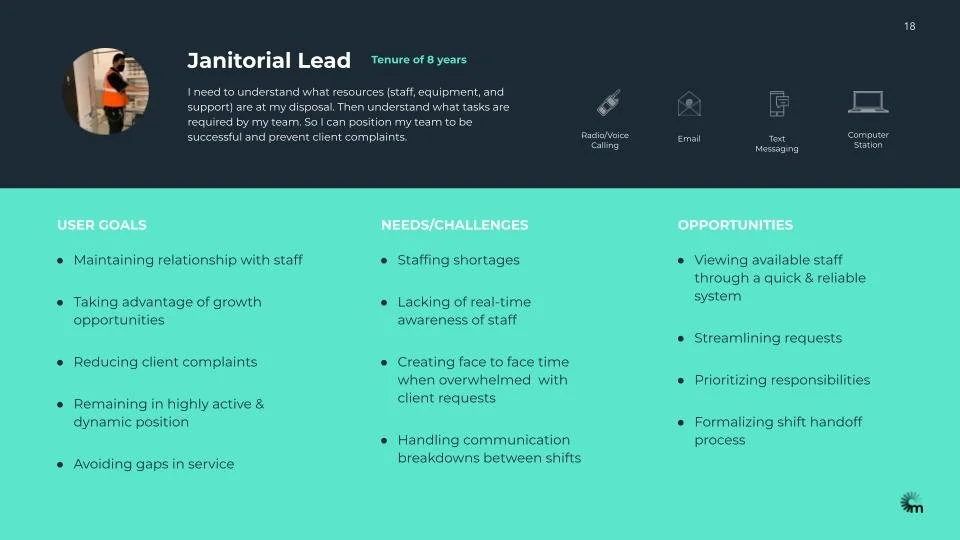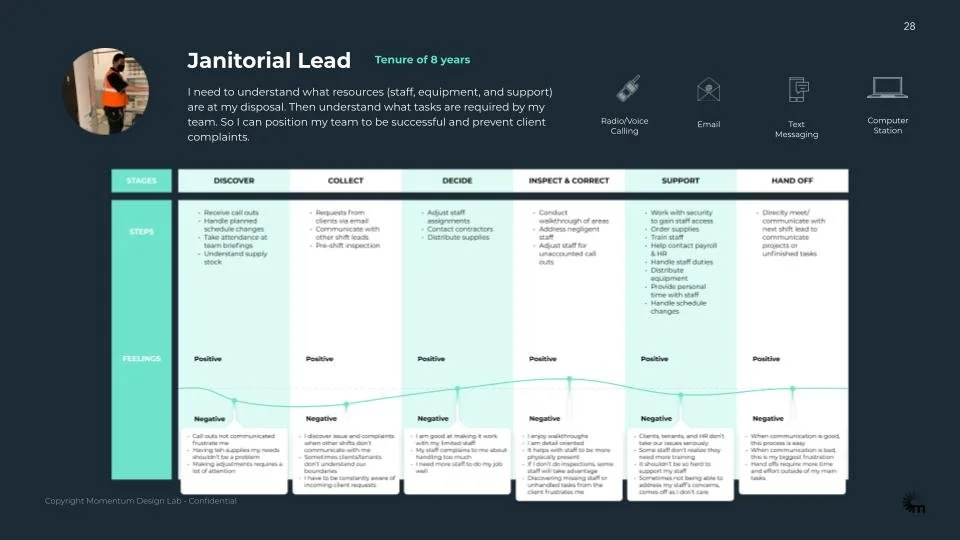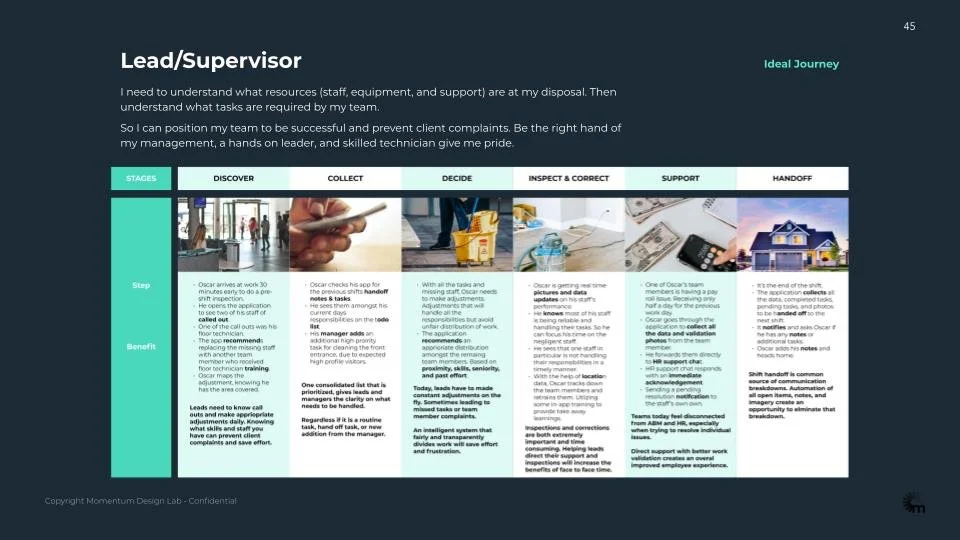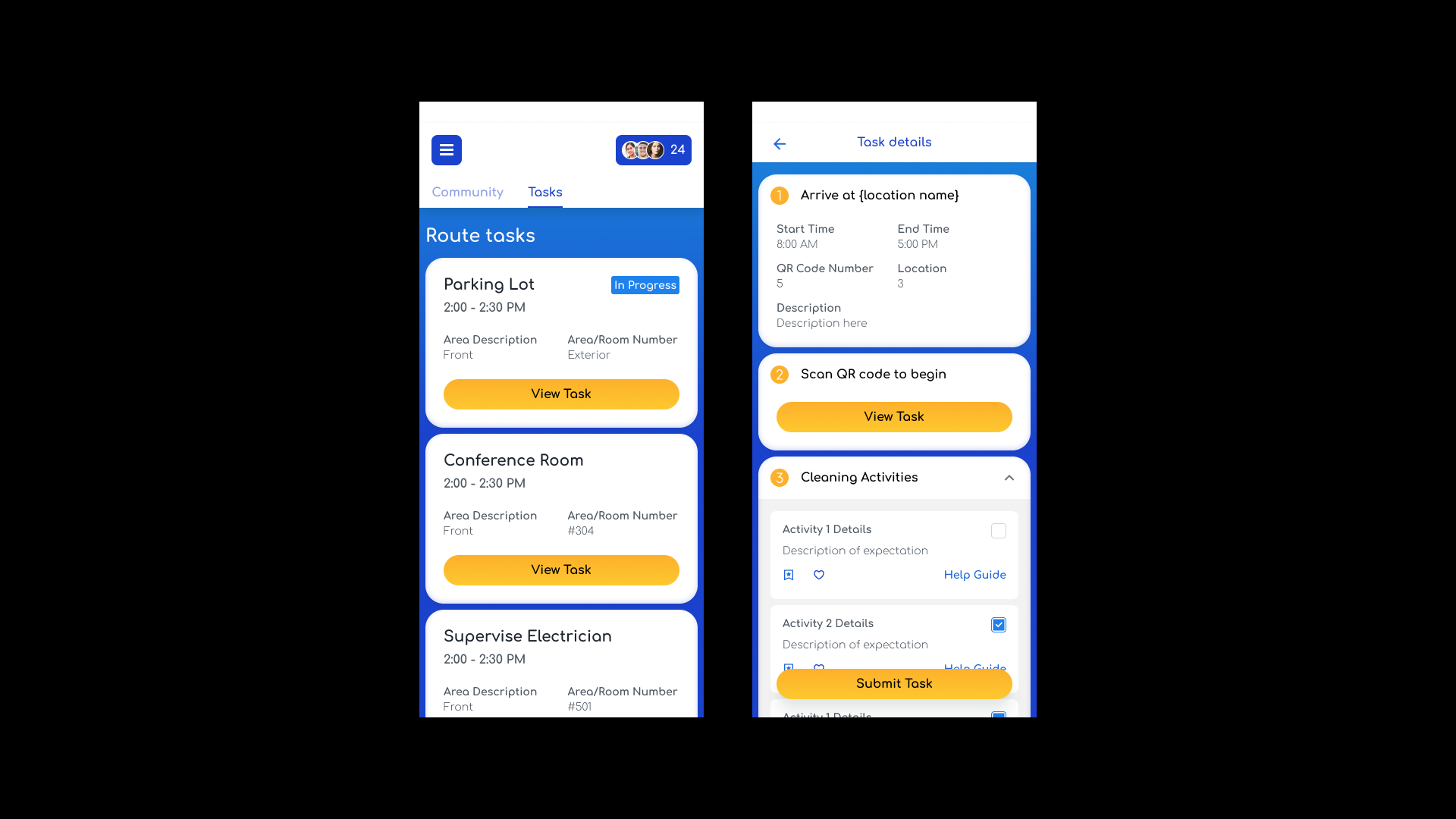Distributed Workforce for ABM
2022 - Principal UX & Product Designer
The objective
To design a digital solution that gathers, organizes and connects ABM's 10,000+ distributed workforce. Bringing one of the nation's largest and oldest facility management enterprises into the modern era.
To effectively design this large scale solution, over 70+ user interviews were conducted alongside multiple onsite observations and a dozen stakeholder interviews. This user research was translated into key-findings and user personas.
The outcome
A user experience that solves key issues such as access to HR, communal work outcomes, clarity of tasks, clarity of available workforce, and accessible on the job training.
Research
User interviews with porters, engineers, supervisors, executives, and works across the nation
ABM team members (employees & contractors) working in airports, university, Amazon warehouses, factories, and more were interviewed about their day to day to work cadence. Research focused on creating a based line understanding of who the user’s are, what are their needs, and critical issues.
Onsite Observations
To gain more insights and to contextualize the user interviews, onsite observations were conducted at the JFK airport in New York and Park Place Irvine. These onsite observations were conducted over multiple days. Shadowing janitorial staff, engineering staff, and supervisors.






Key Takeaways
-
Steamlining 100% SOW Coverage
Momentarily neglected stations, unaddressed work orders, or absent staff are a primary source of customer complaints.
Multiple times a day, supervisors are doing the mental calculation of how to cover arising and pre-existing responsibilities with a fluctuating resource of staff.
Today that responsibility succeeds on manual vigilance and temperamental communication amongst personnel.
-
Training for Customer Service
From engineering to parking/valet services, supervisors and frontline team members emphasized the integral role of customer service.
Without prompt, interviewees often suggest that routine customer service training and reminders would improve service quality.
-
Communication Needs Improvement
Successful services rely on numerous personnel from both ABM and outside of ABM to be in sync every day. Engineers and cleaners often rely on the security and facility managers to complete work. Supervisors need to understand what developed during previous shifts to plan their day. ABM teams are prevented from proper planning and scheduling due to a lack of advance communication by clients.
-
No Direct Line to ABM
While communication between team members and their immediate supervisor is often strong. Various team members mentioned their struggle to be heard by the overall ABM company. Often feeling like their issues or concerns are unvalidated and unsupported.
-
Active Autonomy is Empowering
The ability for team members to handle the responsibilities of their day with little structure was a common source of job satisfaction.
Additionally, having dynamic days that require team members to actively handle broad situations was a common source of satisfaction.
-
Appreciation Through Recognition
Moments of recognition from clients and leadership are signals to team members on the importance of their contributions.
Recognition of both their person and quality of work.
Persona created based on research
User journey based on research
Ideal user journey based on research
Solution
Based on the research, the final solution for the ABM Connect application emphasized utilizing social proof and transparency as a key engagement driver. While past work applications emphasized the supervisor-to-employee dynamic. The new solution socialized achievements, work distribution, and culture within a single feed. Since all work-related information, tasks, and communication were now socialized, the solution allows for team members to be more autonomous. Reducing the in-person check-ins by supervisors and emphasizing accountability amongst peers.
Alongside the core user experience, the solution also addressed other key pain points. Including messaging for direct communication with client and team personnel. Improved clarity for individuals on their tasks and required scope of work coverage. A robust HR solution section for common questions, pay rolls issue and issue submission. Direct links to on-the-job training for the variety of tasks a team member may face.
Socializing The Work
The new solution socialized achievements, work distribution, and culture within a single feed. Since all work-related information, tasks, and communication were now socialized, the solution allows for team members to be more autonomous. Reducing the in-person check-ins by supervisors and emphasizing accountability amongst peers.
Moments of Culture
Absent today, the Connect application highlights personal moments amongst team members and company wide values.
Clarifying The Work
Tasks are now chronologically orders, broken down into simple steps, and linked with help guides to improve the clarity of tasks.






